R3
hunter mentor tim donovan fwc
Do you have any thoughts on this post?
R3
Why conservation is our best bet at keeping central Montana unspoiled
The Missouri Breaks region of central Montana is one of the most unique landscapes in the West. The unusual topography and eroded soils—shaped by the river below and centuries of severe weather—make it a land of extremes. Yet it provides some of the best views, most outstanding recreation, and most abundant wildlife habitat in the country. Rough and rugged coulees descend into dense pockets of ponderosa pine and juniper stands before gradually reaching the cottonwood galleries that line the Missouri River.
These undeveloped backcountry lands still mirror what Lewis and Clark saw as they pushed their way upriver in 1805. We have an opportunity—and a responsibility—to ensure that they remain that way.
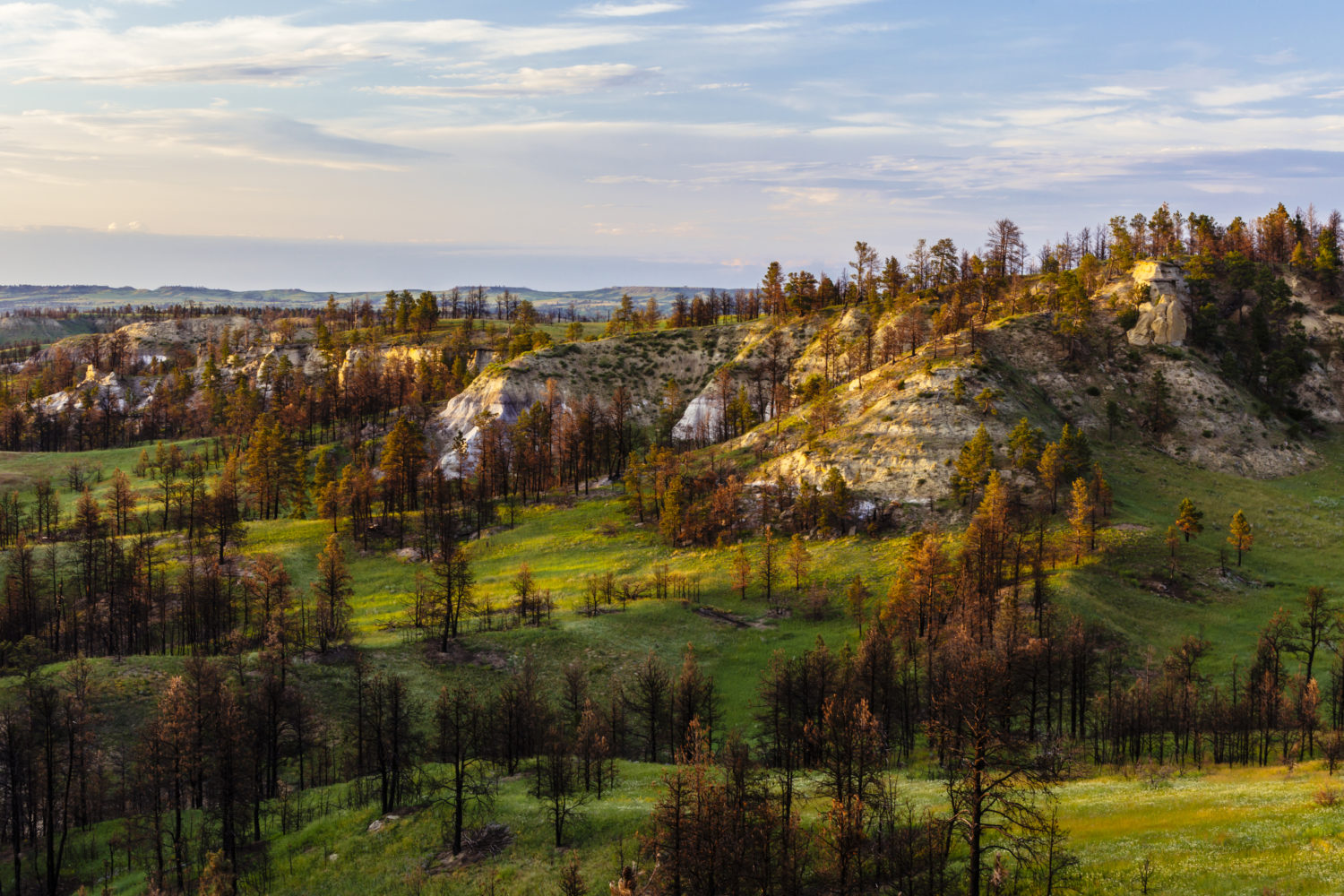
Wildlife and wild places are being increasingly pressured through the loss and fragmentation of quality habitat from energy extraction and residential development. This trend needs to be halted to protect our highly valued undeveloped landscapes. Already, much of the western and eastern stretches of the Missouri have been industrialized, dammed, or otherwise developed. But the central portion of the river—roughly from Fort Benton to Fort Peck Reservoir in Montana—remains largely untouched.
The region supports world-class habitat for elk, mule deer, and bighorn sheep, and the Missouri provides scenic multi-day fishing trips for anglers. Camping, hunting, hiking, and biking in the Breaks region are hard to beat, and stargazers will tell you that it’s difficult to find a place with less light pollution.
Most of this landscape is made up of public land that belongs to all of us and is managed by the Bureau of Land Management and the U. S. Fish and Wildlife Service. On the south side of the Missouri, where the breaks climb and meet the rugged grasslands, the BLM is in the process of updating its resource management plan.
Conservation of this unique landscape in central #Montana won’t happen on its own. #publiclandsproud Share on XThis is a planning document that outlines the management of several hundred thousand acres of BLM lands for the next 20 years or more. This is also a public planning process that provides a unique and critical opportunity to protect some of the best wildlife habitat and most remote public lands in the country from further fragmentation and development.
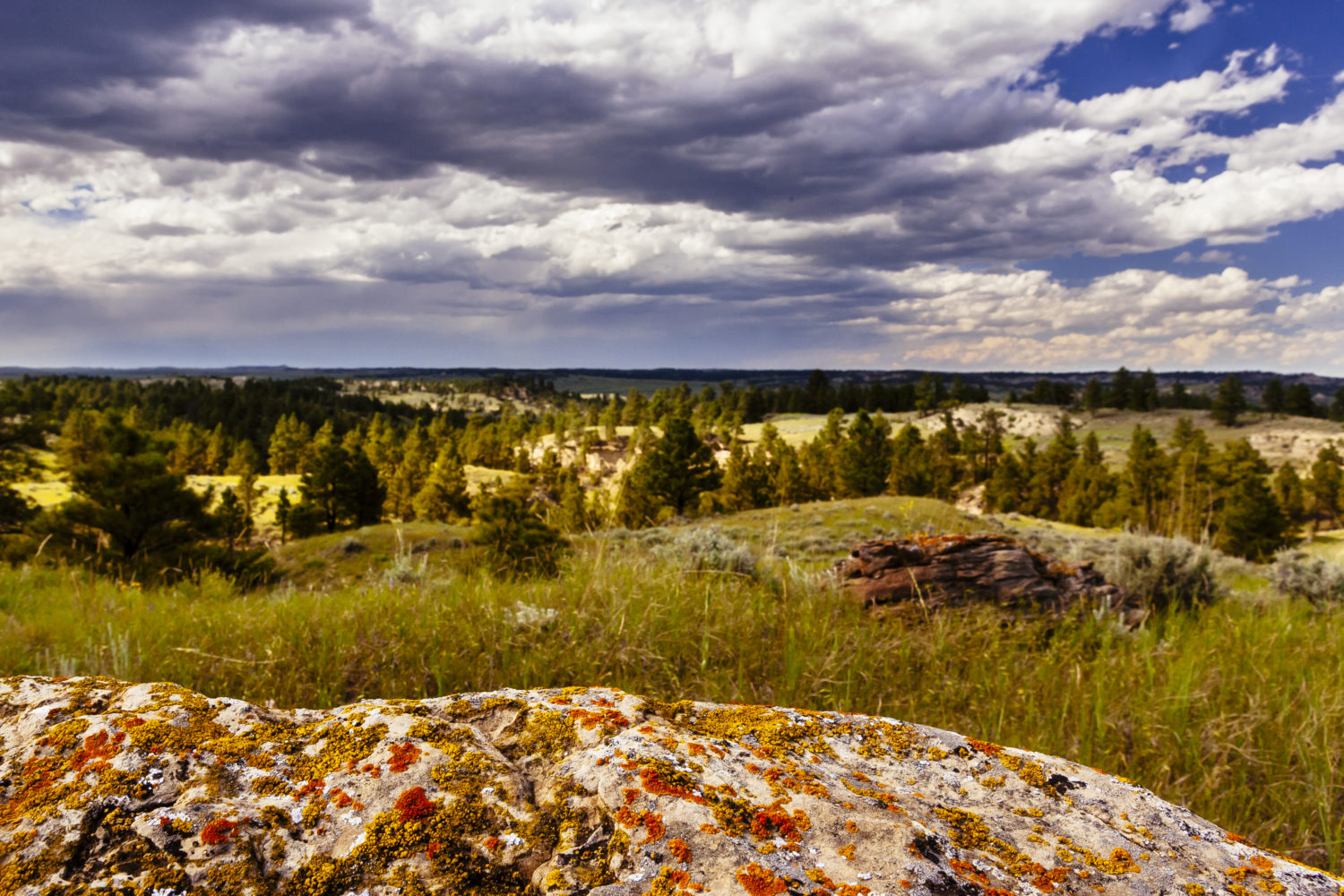
The Theodore Roosevelt Conservation Partnership recognizes the importance of these lands to wildlife, outdoor recreationists, and sportsmen. The political landscape and threats to the region have changed since the last resource management plan was written some 30 years ago, and sportsmen and women are ready to act.
Nearly 1,000 individuals and local stakeholders have delivered collaborative support for the adoption of a common-sense approach for conserving high-value public lands through backcountry conservation management. By utilizing this tool, the BLM would safeguard large intact habitats from development, maintain and improve important dispersed recreation opportunities, and focusing management on the conservation, restoration, and enhancement of key habitats, all while sustaining traditional uses of the land that help support local economies.
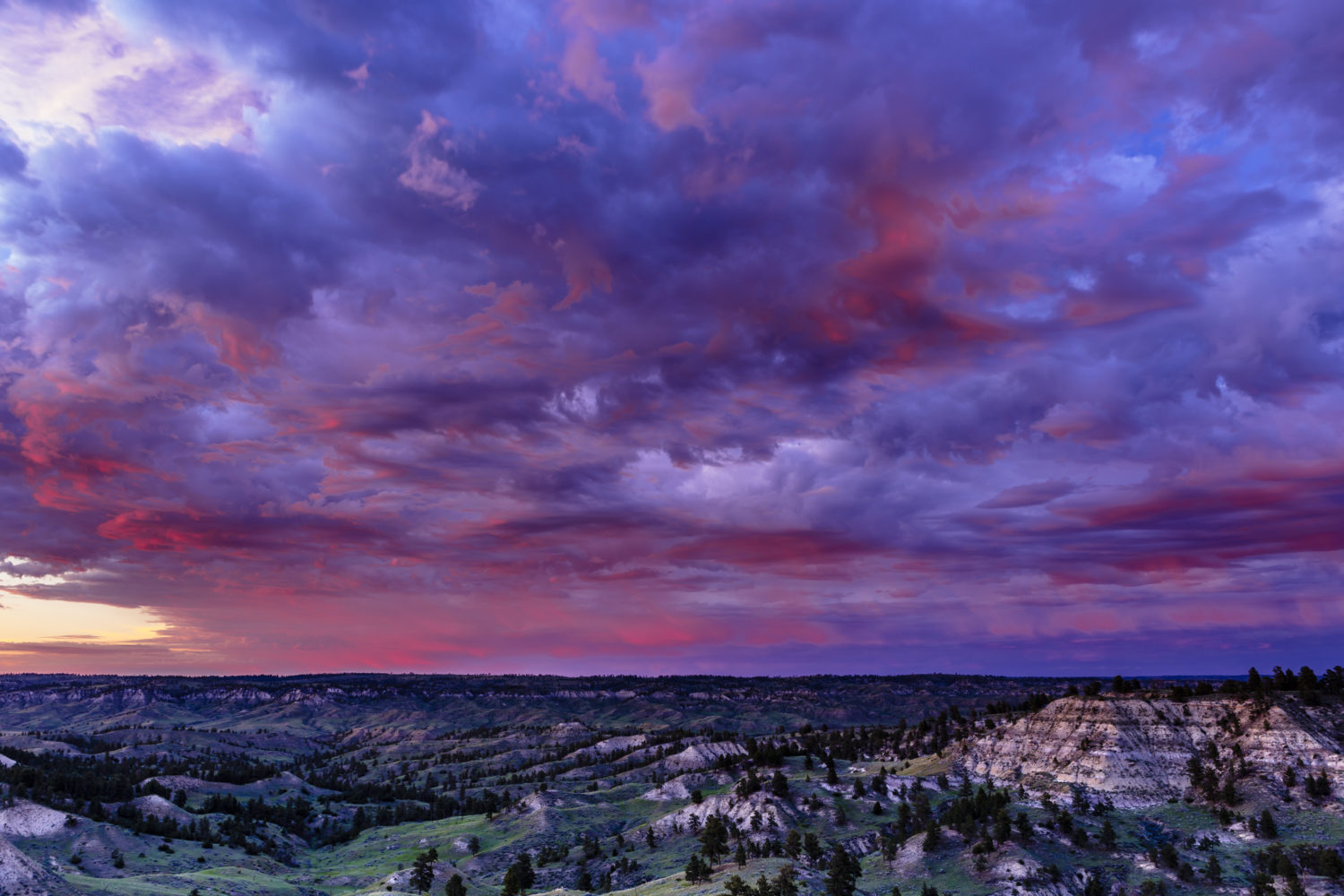
Recent wildfires have devastated several hundred thousand acres of rangeland and wildlife habitat in this region. It’s important to note that the proposed backcountry management tool would encourage restoration activities that would benefit the wildlife and the people who depend on this landscape.
The draft of the resource management plan is expected to be released for public comment in late 2017. Visit TRCP.org/join to be the first to know about your opportunity to get involved.
Conservation of this unique landscape won’t happen on its own. It takes strong voices to protect these areas from future fragmentation and development. As Theodore Roosevelt once said, “a nation behaves well if it treats the natural resources as assets which it must turn over to the next generation increased and not impaired in value.” Here’s a great chance for us to do just that.
New data will help state and federal agencies prioritize conservation and access projects in areas most used by hunters and anglers
Maps of Idaho’s most valued hunting and fishing areas have been made available to state and federal agencies, as well as the public, to help guide future land management decisions.
More than 400 hunters and anglers contributed to the Theodore Roosevelt Conservation Partnership’s mapping project, and the data have been assembled in a geographic information system that can be overlaid with maps showing critical habitat, land ownership, and planned development. After hosting 20 mapping events with sporting clubs from around the Gem State, the TRCP confirmed that hunters are fiercely protective of nearby hunting and fishing opportunities and are profoundly aware of the areas with the most waterfowl, fish, upland birds, predators, and big game.
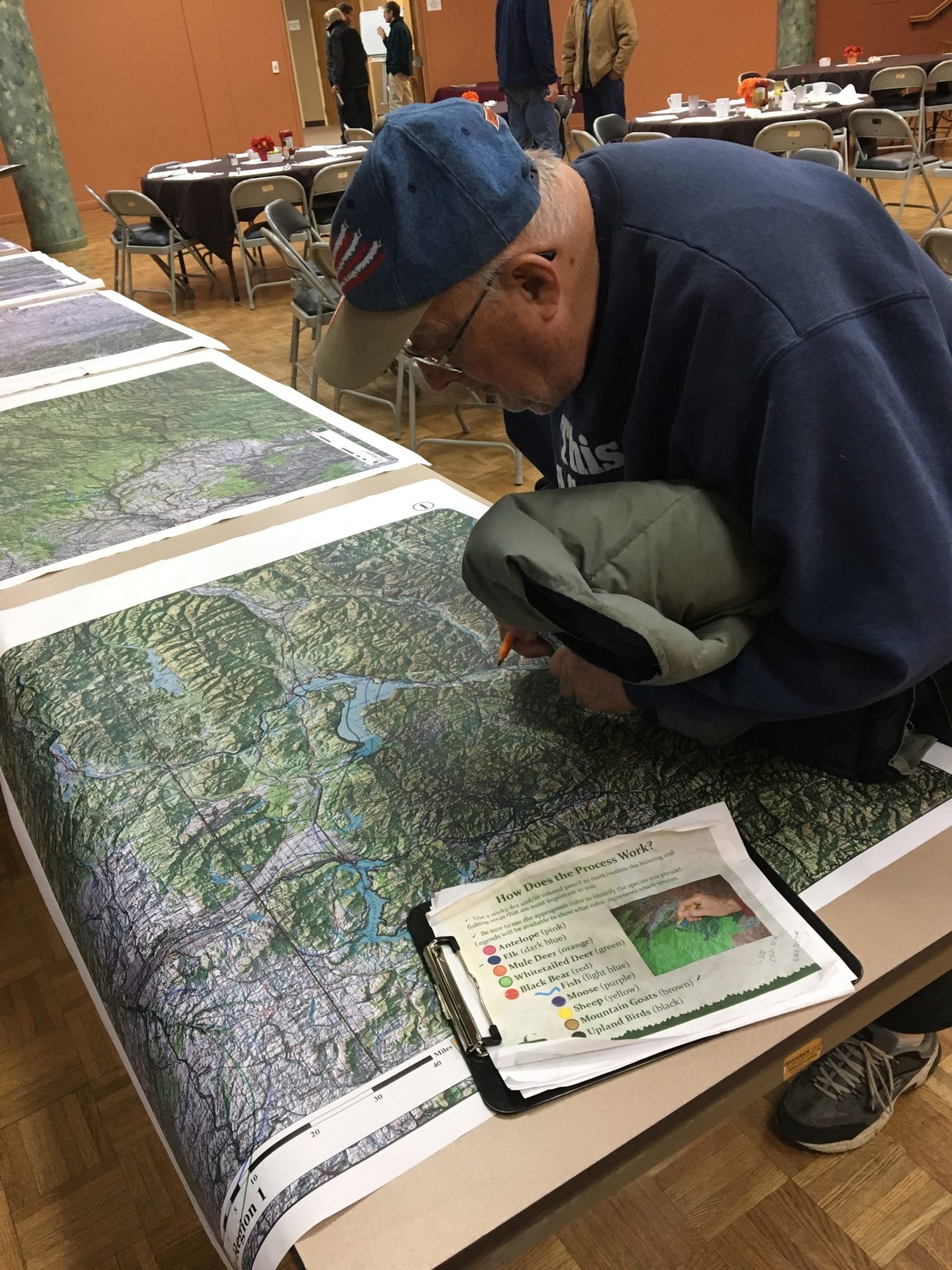
“With the help of sportsmen, we’ve been able to pinpoint lands that are cherished for their hunting and fishing values, so that land managers can prioritize habitat conservation and the enhancement of public access in these areas,” says Rob Thornberry, TRCP’s Idaho field representative out of Idaho Falls.
New maps of #Idaho’s most valued #hunting & #fishing areas could help guide conservation decisions Share on XThe Idaho results showed a sporting community that is loyal to public lands near home, with most residents picking favorite hunting and fishing areas within three hours of their front doors. “There was great fidelity to the public lands in our own backyards,” Thornberry says. “At the same time, roughly a third of sportsmen and women from all 20 mapping events said they still travel all over the state to pursue game and fish.”
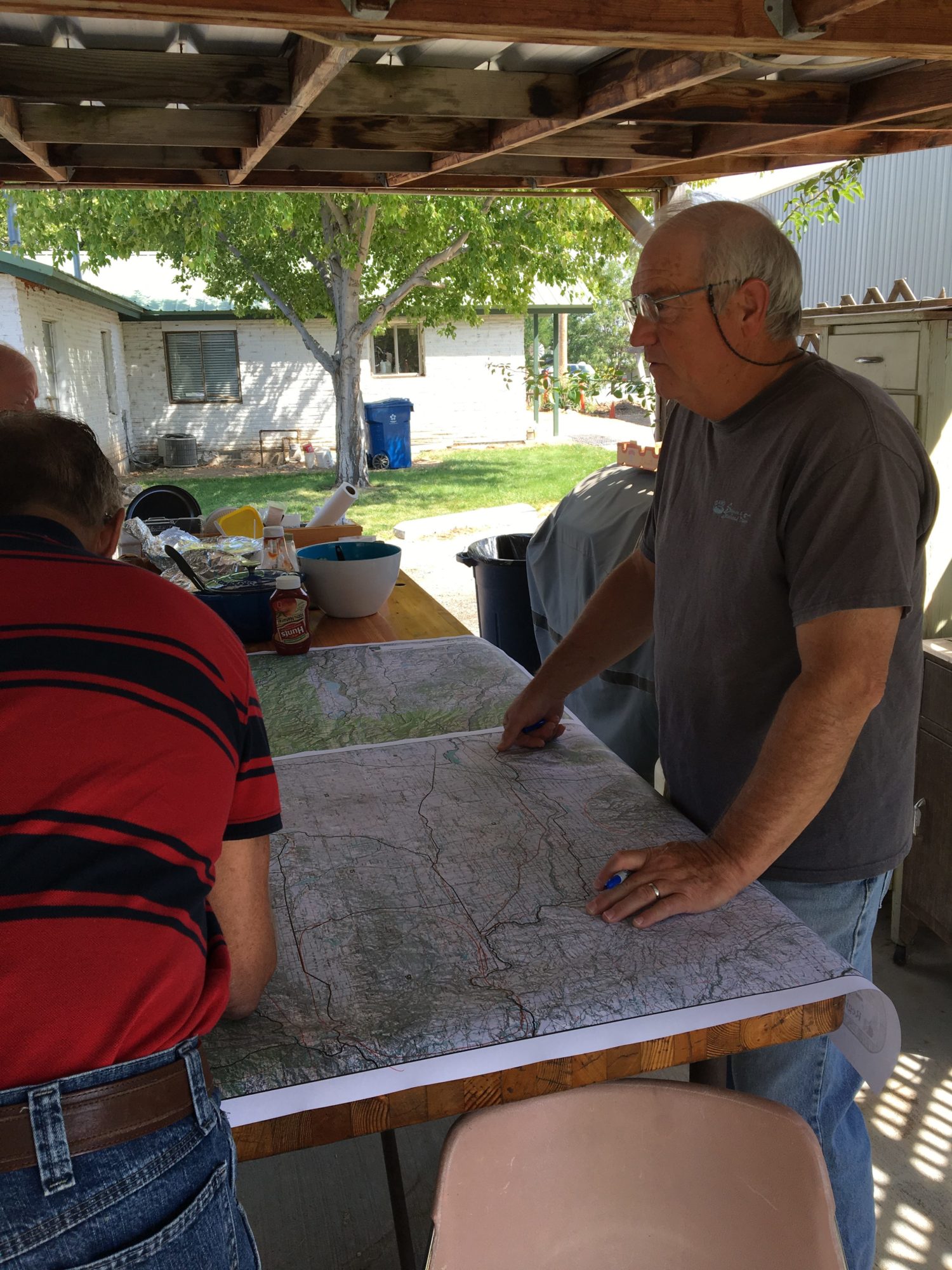
Sportsmen were interviewed in Idaho Falls, Pocatello, Salmon, Stanley, Boise, Twin Falls, Moscow, and Coeur d’Alene. The resulting maps will provide important and previously unavailable data to state and federal agencies to help:
“This map will serve as a useful tool for conservation and management as state and federal agencies evaluate areas for habitat improvements and hunting and fishing opportunities,” says Mark Gamblin, regional supervisor for Idaho Fish and Game in the Pocatello region.
“Knowing Idaho’s population is increasing by 20,000 to 30,000 each year, sportsmen and women need to consider this growth to ensure that wildlife and quality habitat remain abundant,” says Brian Brooks, the executive director of the Idaho Wildlife Federation. “This map highlights, quite literally, where we should focus our efforts.”
The first mapping project of its kind was launched by the TRCP in 2007. Maps have also been completed for Montana, Wyoming, and Arizona.
Sportsmen have largely stamped out the public land transfer movement in the West, but it’s not enough to rally around public land ownership now that a new kind of threat is emerging in the nation’s capital
It was just two years ago when our hunting and fishing opportunities on public lands fell under siege across the West. In 2015, a total of 37 individual bills were proposed in 11 Western states, all aimed at taking away our public lands and handing them over to the states to be industrialized or sold off.
At first, sportsmen and women may have been blindsided by the intensity and breadth of this onslaught, but our community quickly reacted by organizing rallies, testifying at committee hearings, and writing elected officials about the value of public lands. These methods were effective, but in some cases, too little too late. When the dust settled on the 2015 state legislative sessions, six bills had passed in four states.
Luckily, only the federal government has the authority to sell or give away our national public lands, but this was six bills too many. Sportsmen were even more informed and vocal the following year, isolating land transfer legislation to the state of Utah in 2016. In 2017, all of these state bills have died, an indication that state legislators understand land transfer is a toxic idea, having been bombarded by the sporting community and other constituents.
Though talk of transferring public lands continues, we’ll go ahead and say it: We’ve won in the West
Sportsmen and women deserve to crack open a beer in celebration of recent victories, but we should do so with eyes wide open about the next threats to our public lands: The special interests and lobbyists have brought this fight to Washington, D.C., where they are working to take over our public lands in many carefully constructed, covert ways.
They want what they’ve always wanted—control of how these lands are managed, so they can open them up to unfettered development. Management, not ownership, was always the ultimate goal, and there are three primary ways to gain it:
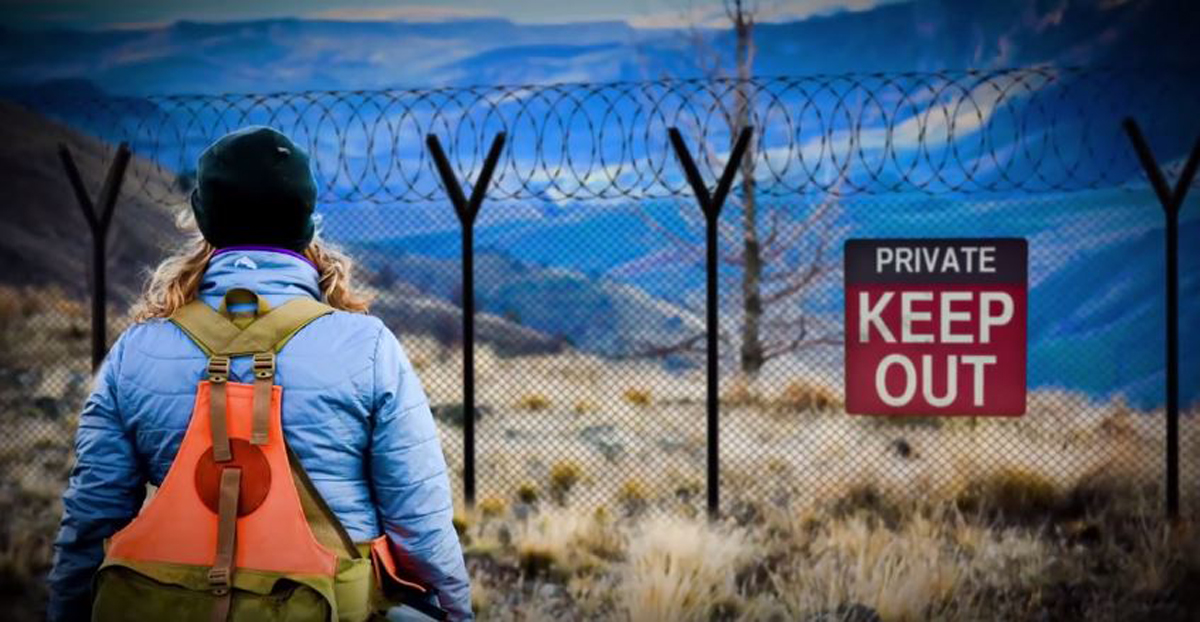
The wholesale transfer or sale of national public lands to the states, what we’ve been fighting since 2015, was just the first attempt and some are still pushing it.
It’s not enough to simply #keepitpublic now as a new #publiclands threat emerges in D.C. Share on XGiving local or state agencies the authority to manage America’s public lands while they remain in federal ownership may sound better, but it will have essentially the same outcome as giving away our lands. Let me be clear, we fully support existing state authority over fish and wildlife management, and we do not want to see that authority eroded. What we are talking about here is control over the management of your public lands, an entirely separate issue. By handing states management authority over public lands, BLM and national forest lands would be managed like school trust lands, where profit is king and outdoor recreation, like hunting and fishing, is an afterthought.
Negating the multiple-use mandate on federal lands would mean losing a carefully crafted balance between hunting, fishing, timber, grazing, and energy extraction. We’ve recently seen versions of this model proposed through the Self-Sufficient Community Lands Act, which would enable states to take over the management of national public lands for industrial forest production, and a proposal from Congressman Rob Bishop that would give states veto authority over the management of sage-grouse habitat.
This method is basically land transfer disguised in more subtle packaging, and lawmakers are counting on the fact that you won’t understand their true intentions. But we see right through it.
If special interest groups don’t like the rules for balancing the many uses of public lands or taking local input into account on land management decisions, well then why not just change them? That’s essentially what they’re trying to do right now.
Earlier this year, the Trump administration seemed focused on rolling out a new executive order weekly to review or revise the rules guiding the management of our public lands. Now, a review of 11.3 million acres of existing national monuments is in (though the administration has yet to act on them) and DOI has completed a study focused on eliminating ‘burdens’ to energy production.
These processes may create opportunities for special interests to rewrite the rules of public-lands management and remove conservation standards for fish and wildlife, while smoothing the way for industrial development. It’s imperative that sportsmen remain closely involved when the rules are being evaluated or rewritten to ensure that our interests and the needs of fish and wildlife get a fair shake in the process.
Land transfer is bad news on its face—it’s always been easy for sportsmen to recognize that and say ‘no way.’ Attacks on how our public lands are managed are sneaky and lower profile, cloaked in confusing policy, yet every bit as dangerous.
The good news is that America’s public lands are still ours—they are a part of what makes our country unique and we still have a say. But our job is more difficult now. We need to remain as fired up as we have been about keeping public lands in public hands AND hold lawmakers accountable for subtle attacks on public land management.
These threats aren’t always easy to explain and don’t fit nicely on a bumper sticker, but that’s why we’re so committed to keeping you informed.
Head over to the new Sportsmen’s Country page to learn more about the not-so-obvious challenges we face on our public lands, because access means nothing without opportunity. Ownership of public lands is meaningless without quality habitat and abundant wildlife to pursue when we’re out there. If we rally around one and ignore the other, it’s possible for decision makers to make access promises while voting to undermine everything we want access to.
Sign the Sportsmen’s Country petition now and do more than keep it public.
This was originally posted May 31, 2017, and has been updated.
The stars seem to be aligning around a major opportunity for sportsmen and women to unite with landowners, who want conservation assistance more than ever, and the decision makers who are focused on revitalizing rural America
Since the first modern Farm Bill in 1933, when Congress took action to address the Dust Bowl, this key piece of legislation has made conservation happen across our rural landscapes. But with the current five-year Farm Bill expiring next year, the upcoming debate over private land conservation and revitalizing farm businesses may coincide with one of the most auspicious times for rural America.
We’ve posted often about the ways that the federal Farm Bill helps improve private lands for the benefit of all Americans, especially sportsmen—after all, it’s the single largest pot of funding for conservation on private lands, and programs authorized by the Farm Bill make it one of the largest national drivers of conservation overall.
We want these trends to continue long into the future. Sportsmen and women have an extensive history of joining our allies in the farming community to work collaboratively on advancing conservation in the Farm Bill, and we’re committed to making it happen again in 2018. At this unique moment for America’s rural economies, we may have even more non-traditional partners rooting for our success.
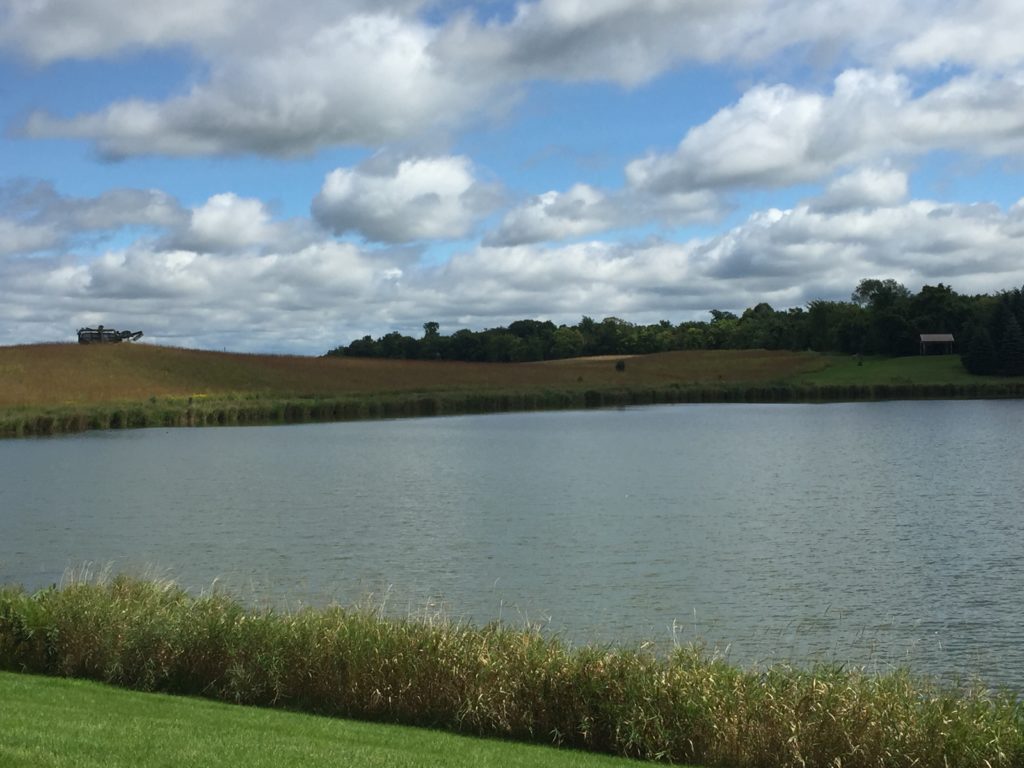
No one knows the Back 40 better than the farmer who harvests his crops there, or the hunter who harvests a buck there each fall. So it’s no surprise that we also share opinions about making sure that private land can do good things for wildlife and fish without undercutting a farmer’s bottom line.
TRCP’s sportsmen’s poll, released earlier this summer, shows that 75 percent of sportsmen and women support providing financial incentives—such as those authorize by the Farm Bill—for farmers and ranchers to conserve land for habitat and clean water, open public access for hunting and fishing, and to practice sustainable farming and ranching methods.
A 2015 survey of farmers showed that 87 percent of farmers agree that it is important to develop wildlife habitat to improve hunting opportunities. There’s no doubt that many of them use Farm Bill programs to help do that work.
So, we agree that conservation is necessary and we need programs to help landowners make it happen.
When it comes to the vitality of rural America, the astounding $887-billion impact of the outdoor recreation economy can’t be ignored. According to the USDA, 228 rural counties are economically dependent on outdoor recreation.
Meanwhile, the farm economy is struggling, as crop prices have remained at devastating lows for the last few years. While you and I rely on our farmers to provide our food, fuel, and the fiber that makes our clothes, the simple act of hunting and fishing on and around private lands can provide a key source of revenue in agricultural communities.
With the potential for a ripple effect from conservation and voluntary public access to private land, the Farm Bill could be thought of as a jobs bill—not just for agricultural producers who need and want the support more than ever, but also for the outfitters, gear manufacturers, and service industry workers in areas where hunting and fishing becomes more vibrant.
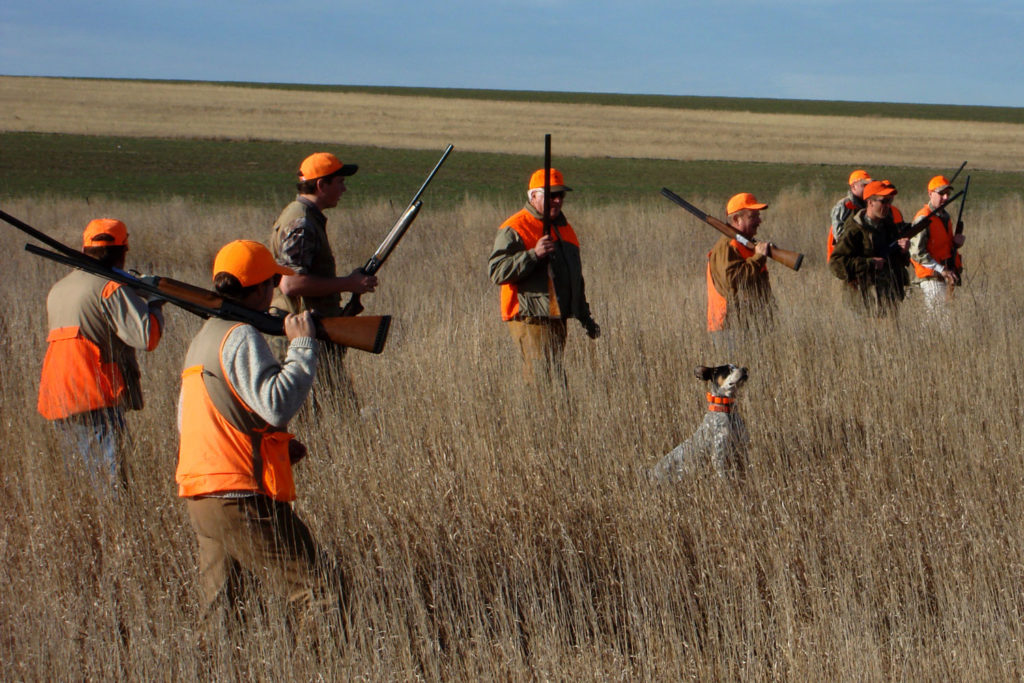
This is why we’re all taking a seat at the table to hammer out a better Farm Bill. The presidential campaign and resulting dialogue has put rural America in the white-hot spotlight, and politicians on both sides are leveraging that fact to score wins back home. The upcoming bipartisan, must-pass Farm Bill is the best tool we have to improve rural economies and maintain a truly American way of life for sportsmen and farmers. Hunters and anglers are ready to make deals to get good habitat, clean water, and public access for hunting and fishing on the ground.
We brought this message to a group of 25 reporters in Minnesota this week, just as the renowned state fair was wrapping up and on the cusp of hunting season. We visited farmers and outdoorsmen to illustrate what these critical conservation programs mean at a local level, and what we saw was passion for healthy landscapes, sustainable livelihoods, and enduring traditions.
A new Farm Bill is on the way, and the connections between agriculture and recreation become clearer with every passing year. We need to tell our story and make sure that decision makers in D.C. know all of us are on the same team. With the right people at the table in this unique and critical time for conservation and rural America, we have the best possible chance of doing right by the land and the people who use it.
Read our recommendations for conservation and access in the 2018 Farm Bill.
Theodore Roosevelt’s experiences hunting and fishing certainly fueled his passion for conservation, but it seems that a passion for coffee may have powered his mornings. In fact, Roosevelt’s son once said that his father’s coffee cup was “more in the nature of a bathtub.” TRCP has partnered with Afuera Coffee Co. to bring together his two loves: a strong morning brew and a dedication to conservation. With your purchase, you’ll not only enjoy waking up to the rich aroma of this bolder roast—you’ll be supporting the important work of preserving hunting and fishing opportunities for all.
$4 from each bag is donated to the TRCP, to help continue their efforts of safeguarding critical habitats, productive hunting grounds, and favorite fishing holes for future generations.
Learn More
